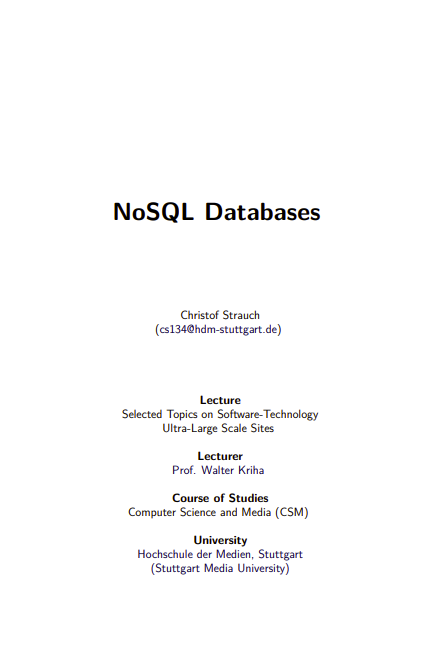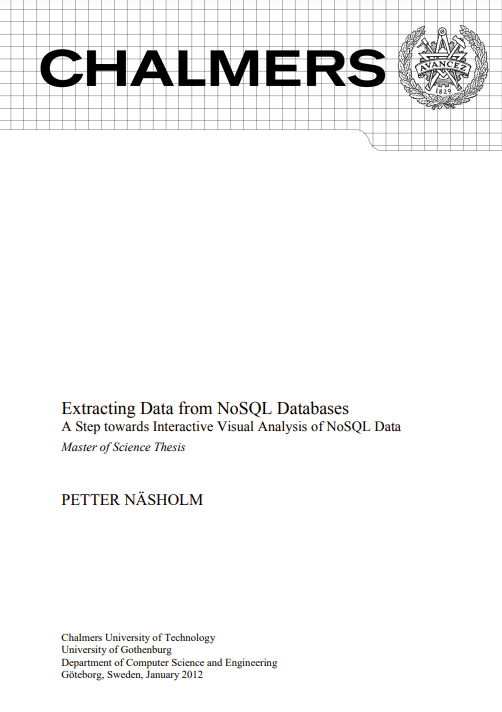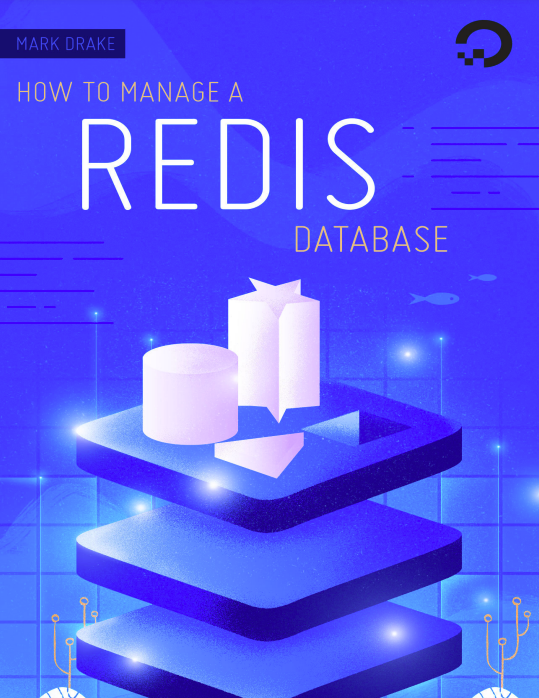Introduction and Overview
Relational database management systems (RDMBSs) today are the predominant technology for storing structured data in web and business applications. Since Codds paper “A relational model of data for large shared data banks“ from 1970 these datastores relying on the relational calculus and providing comprehensive ad hoc querying facilities by SQL have been widely adopted and are often thought of as the only alternative for data storage accessible by multiple clients in a consistent way. Although there have been different approaches over the years such as object databases or XML stores these technologies have never gained the same adoption and market share as RDBMSs. Rather, these alternatives have either been absorbed by relational database management systems that e. g. allow to store XML and use it for purposes like text indexing or they have become niche products for e. g. OLAP or stream processing.
In the past few years, the ”one size fits all“-thinking concerning datastores has been questioned by both, science and web affine companies, which has lead to the emergence of a great variety of alternative databases. The movement as well as the new datastores are commonly subsumed under the term NoSQL, “used to describe the increasing usage of non-relational databases among Web developers”.
This paper’s aims at giving a systematic overview of the motives and rationales directing this movement (chapter 2), common concepts, techniques and patterns (chapter 3) as well as several classes of NoSQL databases (key-/value-stores, document databases, column-oriented databases) and individual products (chapters 4–6).
1.2. Uncovered Topics
This paper excludes the discussion of datastores existing before and are not referred to as part of the NoSQL movement, such as object-databases, pure XML databases and DBMSs for special purposes (such as analytics or stream processing). The class of graph databases is also left out of this paper but some resources are provided in the appendix A. It is out of the scope of this paper to suggest individual NoSQL datastores in general as this would be a total misunderstanding of both, the movement and the approach of the NoSQL datastores, as not being “one size fits all”-solutions. In-depth comparisons between all available NoSQL databases would also exceed the scope of this paper.





